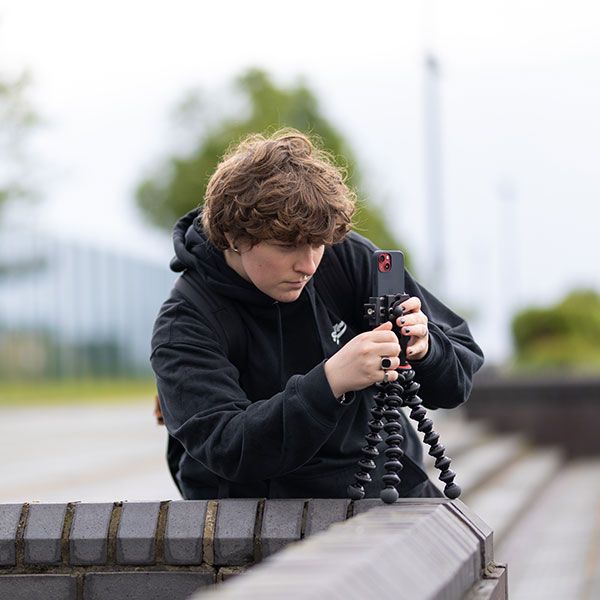Year 2 (national level 5):
Core modules
Placement and Practice (20 credits)
Organise and carry out a continuous one-week placement. Analyse the organisation you are with by either critically evaluating their portfolio of work or writing an essay analysing an aspect of the organisation. Complete a placement log/diary which reflects what you did and what you learnt.
Social Media: Theory and Practice (20 credits)
Develop and implement a social media strategy using professional scheduling software and analytics tools. Learn the skills necessary to create and pitch a social media campaign in response to a live client brief. Explore the latest theoretical arguments around social media and communication in order to develop your thinking around the subject and inform your decision-making.
Practical Public Relations: Strategy and Theory (20 credits)
Build on the theoretical and practical foundation you developed in your first year to learn the key elements in the process of creating a PR strategy for a real-world client or employing organisation. Engage with a critical review of PR planning models and gain an understanding of the importance of research and the study of a variety of case studies. Learn about the importance of ethical codes that aim to guide practitioners in the minefield of modern-day PR practice.
Ready Player One: Operating within the Streaming Industry (20 credits)
Develop both a practical and critical understanding of one of the fastest growing media sectors in the 21st century: the livestreaming economy. Research the live streaming economy and create content for a unique product through a variety of pre-recorded and live stream videos. Complete the module with an understanding of the importance of the relationships between content creator and intended audience, effective branding and planning, as well as a critical awareness of ethical practices and broadcast regulations.
Data Analysis and Visualisation (20 credits)
Learn to create visual, interactive and written data-driven content suitable for a range of organisations and platforms. Develop your knowledge and practical skills in relation to statistics, data analysis, spreadsheet functions, database management, data scraping, programming languages, big data, statistical software, visualisation tools and data storytelling techniques.
Optional modules (choose one):
Fashion Styling (20 credits)
Explore the techniques and processes of creative imagery for fashion media and brands. Learn the practicalities of styling, including the sourcing of themes, garments, models and hair and make-up artists. Act as stylist and art director to oversee your own studio shoots. Learn about the workings of fashion studios and understand the basic principles of fashion photography.
The Moving Camera (20 credits)
Develop your understanding of moving cameras, their images and the impact of those images on screen. Explore and learn to control moving camera equipment including Steadicams, Track and Dollies, Jib-arm, and sliders in order to create professional moving compositions.
Experiencing the Creative Industries (20 credits)
Apply a reflective and evaluative approach to creative and self-development through individual and collaborative conceptual development. Demonstrate the application of analysis through applied research skills within broad contexts that develop your ideas and professional practice. Examine your inter-disciplinary skills and practice to develop actions for personal, professional, and career development.
Club Journalism (20 credits)
Get prepared for life working in the media department of a professional sporting organisation. Discover the employment opportunities for sports journalism graduates in this field. Learn about the differing priorities of “club” journalism versus traditional sports journalism, the dynamics of daily interaction with high-profile players, coaches and club executives, and how to promote a club “brand” across a range of multimedia platforms while maintaining editorial standards.
Advanced Feature Writing (20 credits)
Learn how to write in a range of feature styles. Discover how to put together a long-form article that provides background and context for a news story. Build on the review-writing skills you acquired in your first year. Experiment with first-person profiles and discover the world of B2B writing.
